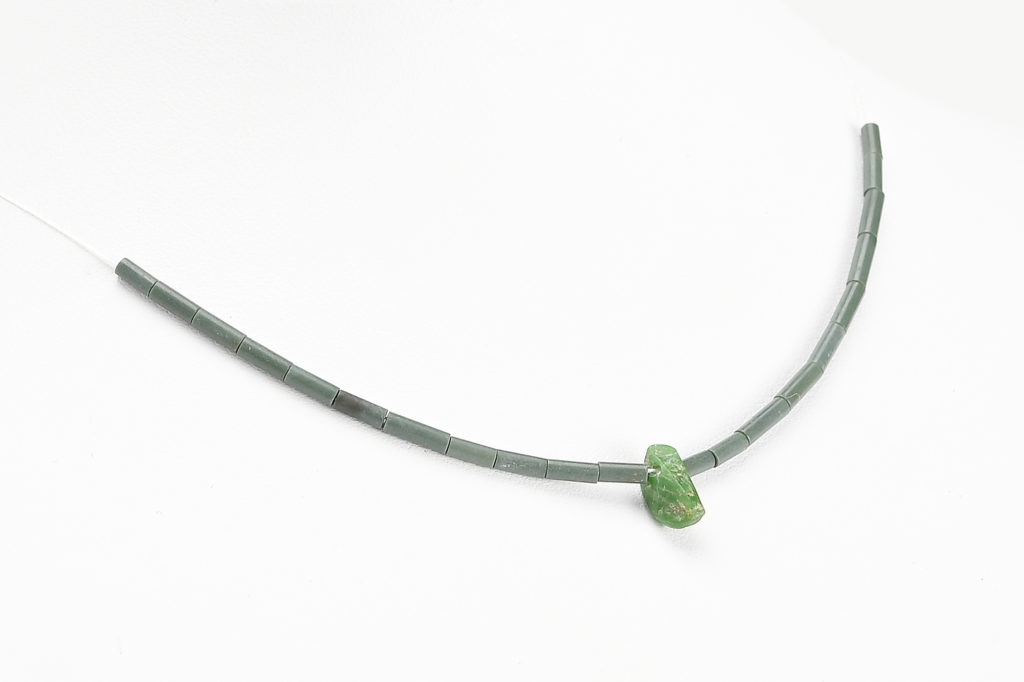Komatsu City, Ishikawa Prefecture
Middle Yayoi period (approximately 2,300 years ago)
 Hafted iron spear-plane, in situ Recovered on the northern bank of the river flowing through the center of the settlement.
Hafted iron spear-plane, in situ Recovered on the northern bank of the river flowing through the center of the settlement.
|
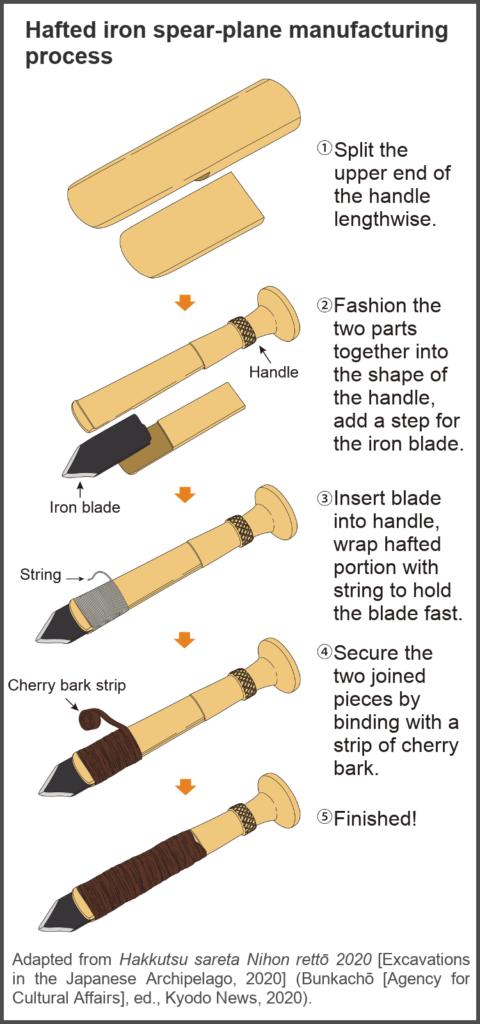 |
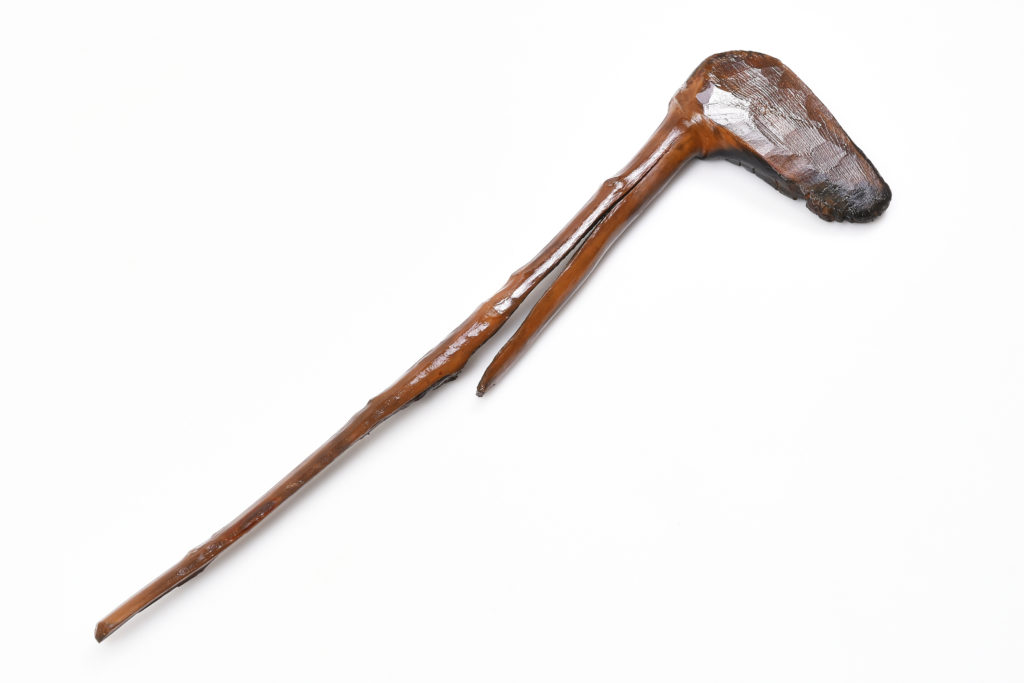 Axe handle A handle made to fit a cast iron axe brought from the continent. The material is the very supple Japanese plum yew. Length: 69 cm; width: 18.4 cm.
Axe handle A handle made to fit a cast iron axe brought from the continent. The material is the very supple Japanese plum yew. Length: 69 cm; width: 18.4 cm.
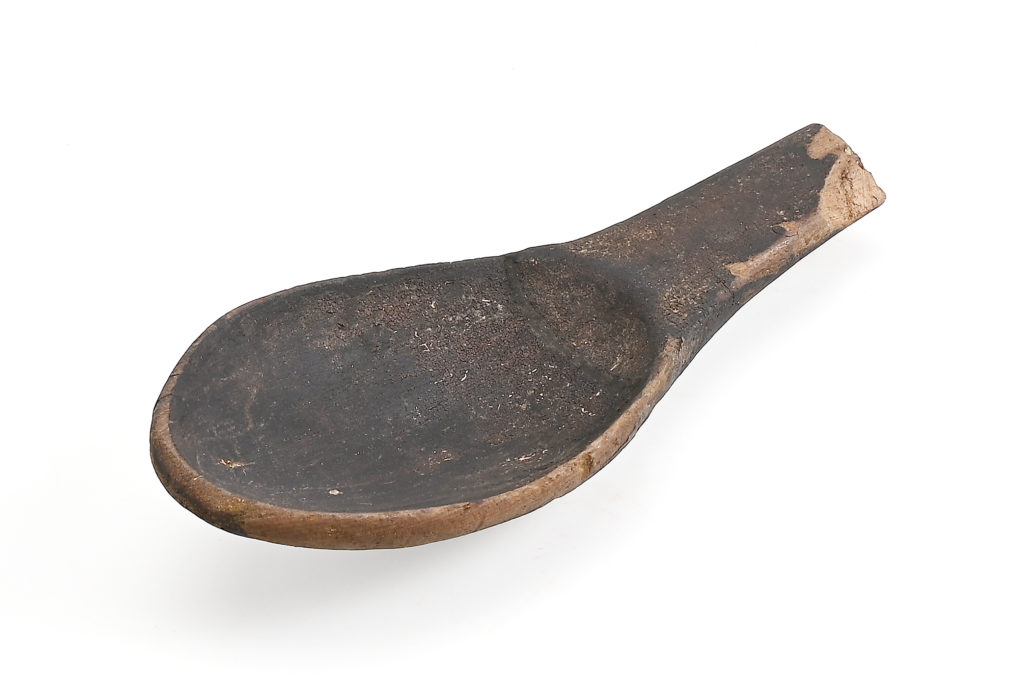 Spoon Made with hard and fine-grained wood of the genus Camellia. The handle is lost, but the item is elegantly made. Length: 16 cm; width: 7.2 cm.
Spoon Made with hard and fine-grained wood of the genus Camellia. The handle is lost, but the item is elegantly made. Length: 16 cm; width: 7.2 cm.
Stone accessory A string of 21 cylindrical jasper beads with a jade pendant at the center. Jade pendant: 10 mm long; cylindrical beads: 5–8 mm long, 2 mm diameter.
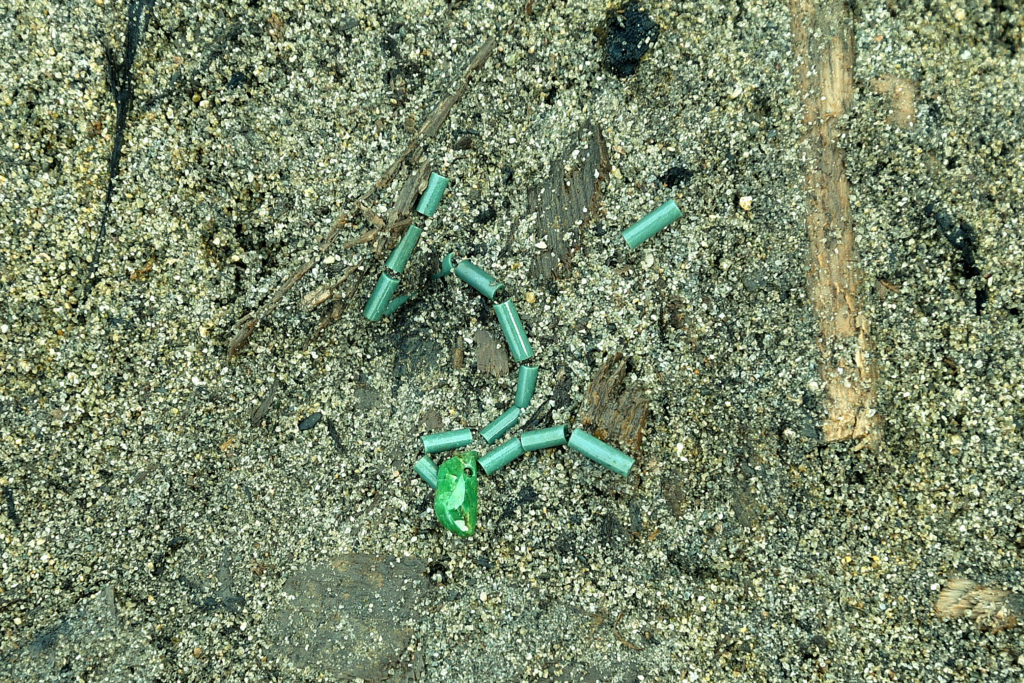 Stone accessory, in situ Although the string had not survived, it was miraculously possible to confirm that the beads had been strung together.
Stone accessory, in situ Although the string had not survived, it was miraculously possible to confirm that the beads had been strung together.
Beads
 |
 |
Jade comma-shaped beads
 |
 |
 |
 |
| 1 | 2 | 3 | 4 |
 |
 |
 |
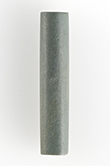 |
| 5 | 6 | 7 | 8 |
Cylindrical beads Item 1 is ferruginous quartz; Item 2 is green tuff; Items 3–8 are jasper.
Bead-making tools
 |
 |
Stone needles Thought to have been a perforating implement for drilling holes in cylindrical beads, etc. There are items made by grinding (left, andesite) and percussion (right, agate), and traces remain on the tips from rotation while drilling. From the amounts recovered they are thought to have been made in large quantities as consumable goods. Diameter: 1–2 mm.
 Bead grinding stone The material is rhyolitic tuff. Length: 16 cm; width: 9.3 cm; height: 6.4 cm.
Bead grinding stone The material is rhyolitic tuff. Length: 16 cm; width: 9.3 cm; height: 6.4 cm.
Jasper with abrasion-cut grooves left by a stone saw Length: 8 cm; width: 5.4 cm; thickness: 1.7 cm.
Oldest in Japan! First discovery of a complete hafted iron spear-plane
A core settlement situated at a strategic transport location
The Yōkaichi Jigata site located in Komatsu City, Ishikawa Prefecture, is a leading large-scale core settlement on the Japan Sea coast for the Middle Yayoi period. In the environs are lagoons and the net-like branches of the Kakehashi River system, and it sits at a strategic point of a water transport route linked through these with the sea.
The settlement unfolds along both banks of a river gently meandering from east to west, and is composed of residential and cemetery districts. The residential district is encircled by three moats, and the cemetery district spreading beyond these is comprised mainly of square moated-precinct burials, of which more than 30 have been ascertained thus far.
From the residential district and the river, in addition to pottery as many as 186 examples of cylindrical jasper beads and comma-shaped jade beads have been recovered, along with the raw materials for these, plus unfinished items and tools for their manufacture, from which a state of lively production of various beads within the settlement can be discerned. Among these materials is a beautiful accessory consisting of a jade pendant on a string of cylindrical jasper beads.
Also, in addition to large amounts of wooden implements and stone objects, including items in the process of manufacture, finds related to the diet of the time have been recovered in good condition, such as animal bones including deer and wild boar, shells including those of the Japanese basket clam (shijimi) and oysters, and seeds and nuts such as rice, horse chestnuts, and walnuts.
Discovery of a hafted iron spear-plane
Among the finds, an iron spear-plane (yariganna) recovered in the form in which it was used, hafted to a wooden handle, was the first such example clarifying the manner of hafting and use for this wood planing tool. Not only that, this is a tremendous discovery providing the opportunity to reevaluate the marks left by processing on wooden and bone implements, or the wooden implements discovered everywhere that are recognized as handles for tools. Thought to date from the middle portion of the Middle Yayoi period based on the accompanying pottery, it is believed to have been brought from the continent before iron tool manufacture began in earnest in the Japanese archipelago.
In addition, fragments of cast iron axes thought like the spear-plane to have been brought from the continent, and wooden handles for hafting these items were found in large numbers. In particular, together with items recovered previously the wooden axe handles number 13 items, the most numerous case of such finds for the Middle Yayoi period.
Previously, the diffusion of iron tools in the Middle Yayoi was thought to have been limited to regions such as northern Kyushu, but these discoveries have brought the significant result of compelling a reevaluation of this perception. (Nakaya Katsuhiko)


